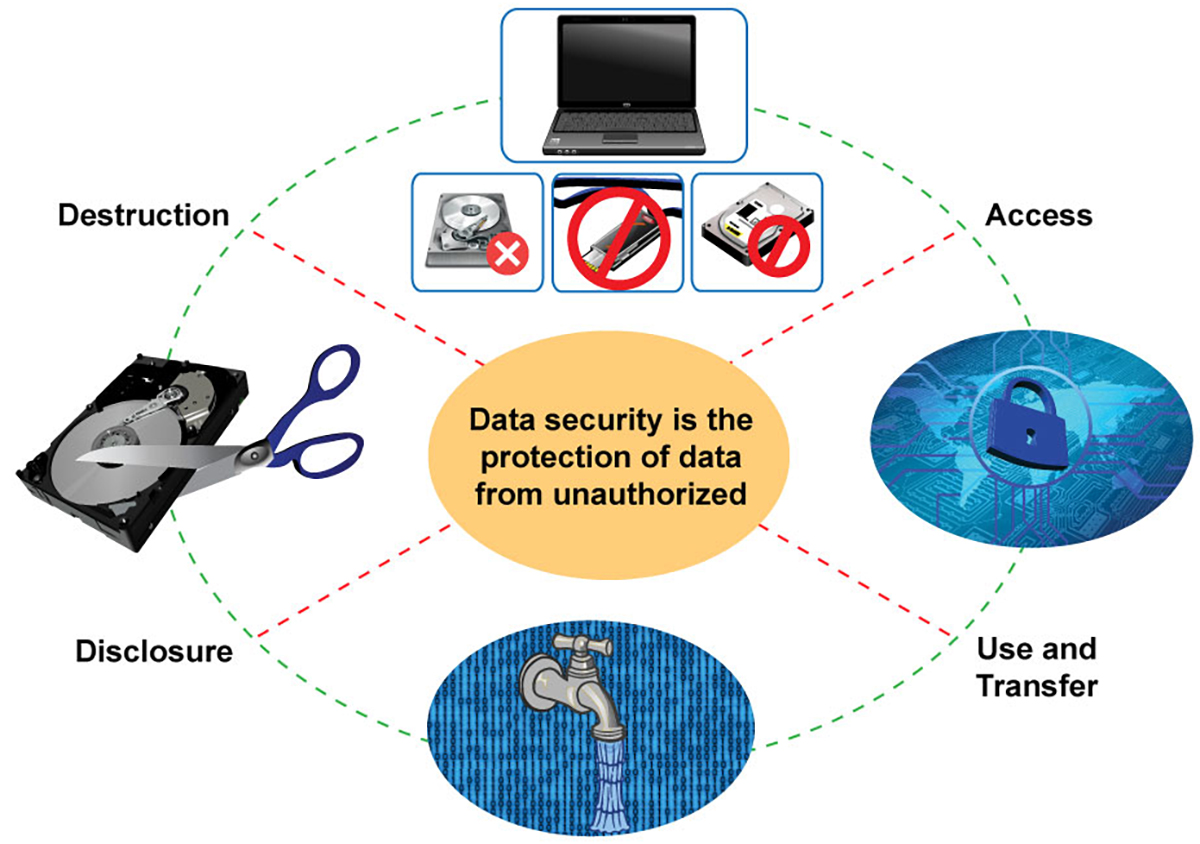Maximizing Cyber Security through Advanced Data Destruction Techniques
Maximizing Cyber Security through Advanced Data Destruction Techniques
Blog Article
The Significance of Effective Data Damage Practices in Shielding Sensitive Details and Ensuring Computer Safety And Security
In a period where information breaches are increasingly typical, the importance of efficient information destruction methods can not be overemphasized. Organizations face significant dangers when sensitive info is improperly disposed of, potentially resulting in unapproved access and extreme financial consequences. Applying robust information damage techniques not just mitigates these risks however likewise lines up with lawful conformity needs, ensuring that organizations support their track record and foster customer trust fund. However, the question remains: what specific approaches can be used to boost these methods, and just how can companies successfully integrate them into their overall cybersecurity framework?
Recognizing Data Damage
Understanding information destruction is critical in today's digital landscape, where delicate info can quickly be compromised. Reliable information damage includes not merely guaranteeing yet erasing files that information is irretrievable through extensive approaches. This process is essential for companies that deal with personal client details, copyright, or inner files, as any violation can result in extreme financial and reputational repercussions.
Information destruction incorporates different strategies, consisting of shredding physical media, degaussing magnetic storage space tools, and using software-based services that overwrite information several times. Each approach offers a specific purpose and should line up with the sensitivity of the info being disposed of. For example, physical damage is typically liked for tough drives containing highly confidential data, while software techniques may be sufficient for much less sensitive info.
Additionally, adhering to industry standards and policies, such as the General Information Protection Regulation (GDPR) or the Health And Wellness Insurance Policy Portability and Responsibility Act (HIPAA), is essential for compliance and to reduce legal dangers. Organizations needs to create a robust information destruction policy, train employees on best techniques, and regularly audit their procedures to ensure that all delicate info is dealt with securely and efficiently.
Risks of Inadequate Practices
Inadequate information devastation practices reveal organizations to substantial threats that can have far-ranging repercussions. When sensitive information is not appropriately disposed of, it remains susceptible to unauthorized gain access to, which can result in data violations and identification burglary. Such incidents not just compromise the safety of individuals however also taint the organization's track record, resulting in a loss of client trust fund and prospective economic repercussions.
In addition, regulative conformity is progressively stringent in lots of industries. Failing to stick to information destruction guidelines can cause significant penalties and legal activities against organizations. These fines can stress economic sources and draw away focus from core business operations.
In enhancement, the abuse of residual information can lead to intellectual building burglary or company espionage, endangering affordable benefits (data destruction). The influence of inadequate data devastation expands past prompt financial losses; it can also lead to long-lasting damage to brand stability and market setting

Organizations need to identify that information security is not entirely regarding avoiding breaches; it likewise includes the liable administration of information throughout its lifecycle. Neglecting effective data damage procedures can have disastrous effects, emphasizing the necessity for durable actions to mitigate these dangers.
Ideal Practices for Data Damage
Carrying out reliable data damage techniques is crucial for protecting delicate details and maintaining compliance with regulatory requirements. Organizations ought to embrace a multi-faceted method to make sure that data is irretrievable, thus protecting against unauthorized accessibility and prospective violations.
First, data must be classified based upon sensitivity, permitting companies to apply suitable destruction methods customized to the degree of danger. For electronic information, using software-based data-wiping tools that adhere to sector criteria can successfully overwrite existing data. Physical devastation techniques, such as shredding or degaussing, are essential for tools that save sensitive information, making certain full elimination.
Establishing a clear data retention plan is crucial, outlining how long various sorts of info ought to be retained prior to damage. Routine audits of data storage systems are additionally essential to determine unneeded or outdated information needing elimination.
Additionally, training staff members on the relevance of information destruction and weblink the details procedures to follow fosters a society of safety within the organization. Preserving documentation of data damage processes provides responsibility and sustains compliance with inner plans and external regulations. By adhering to these best methods, companies can significantly alleviate the risks linked with data exposure.
Legal and Compliance Factors To Consider

Failure to adhere to these guidelines can result in serious penalties, consisting of substantial penalties and reputational damage. Organizations has to carry out a robust information damage plan that lines up with these legal structures and supplies clear guidelines on the correct approaches of check here data disposal, whether physical shredding or electronic wiping.
Additionally, maintaining paperwork of information destruction tasks is important for showing compliance throughout audits or evaluations. By focusing on legal and conformity considerations, organizations can improve their information safety stance and foster count on with stakeholders and clients, eventually adding to a more safe data administration setting.
Benefits of Effective Data Devastation
Efficient information devastation practices expand beyond simple conformity; they offer considerable advantages to organizations that prioritize them. By making sure that sensitive details is irretrievably ruined, companies mitigate the danger of information breaches and the potential monetary repercussions related to them. This proactive technique not just safeguards against unapproved gain access to yet also improves the total trustworthiness of the organization in the eyes of clients and stakeholders.
Carrying out durable information damage techniques, such as physical devastation of storage gadgets or innovative information wiping methods, adds to the conditioning of a company's cybersecurity pose. data destruction. It minimizes the chance of copyright theft and protects exclusive information, therefore maintaining a competitive edge out there

Verdict
Finally, efficient information destruction methods are essential for protecting delicate details and boosting general computer system security. By carrying out thorough methods such as software application, degaussing, and shredding overwriting, companies can mitigate the dangers linked with unapproved access and data violations. Adherence to governing requirements, consisting of GDPR and HIPAA, further my sources reinforces compliance and shields versus legal repercussions. Inevitably, a commitment to robust data destruction methods cultivates a culture of responsibility, thus strengthening a company's cybersecurity pose and preserving customer trust fund.

Report this page